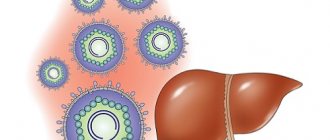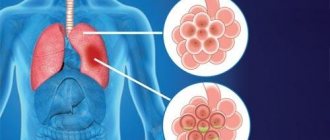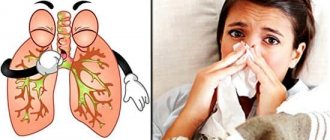- Why does snot run down the back of the throat?
- Symptoms of postnasal drip
- Complications of the syndrome
- How to remove nighttime mucus drainage
- Treatment of snot in the throat of a child
- Treatment of snot in the throat in an adult
When snot runs down the back of your throat, the condition is called postnasal drip or postnasal drip syndrome. Why does this condition occur and what are the complications?
Normally, a small amount of mucus is constantly present in the nasopharynx, which is produced by the exocrine glands. The mucus mixes with saliva and moves further into the digestive tract. Mucus is necessary to moisturize and cleanse the nasal cavity and nasopharynx from foreign substances that enter the respiratory tract with air. This process is absolutely physiological and does not cause any inconvenience. Discomfort occurs when the amount of mucus increases and its viscosity changes. Postnasal drip syndrome is a pathological condition and requires attention from a specialist.
Why does snot run down the back of the throat?
The pathology accompanies a number of ENT diseases. Possible reasons why snot runs down the back of the throat are:
- proliferation of adenoids;
- congenital anomalies of the structure of the mucous membrane of the posterior wall of the nasopharynx;
- deviated nasal septum;
- rhinosinusitis of various etiologies accounts for more than 50% of identified clinical cases;
- entry of a foreign body into the nasal cavity.
Women may experience the appearance of snot in the throat during pregnancy. A similar situation arises for people who work in hazardous industries or live in regions with poor ecology, or smokers. Chemical fumes, tobacco smoke, and particles of household chemicals entering the respiratory tract lead to irritation of the mucous membrane, so mucus production increases and snot flows into the throat.
The problem of leakage appears when taking certain medications. In particular, such a situation may be associated with the uncontrolled use of vasoconstrictor nasal drops. While the patient is using these medications, postnasal drip of mucus is observed. After discontinuation of the drug, mucus production normalizes and unpleasant symptoms disappear.
Some people experience snot running down their throats when the temperature and humidity change. When the microclimate is normalized, the human condition improves.
In some cases, the appearance of postnasal drip in adults and children is in no way associated with ENT diseases. The cause is pathology of the digestive organs, which is accompanied by gastroesophageal reflux. The contents of the stomach are regularly thrown into the esophagus, which causes belching, sore throat, and irritation of the mucous membrane. For this reason, mucus production increases and postnasal drip appears.
In some patients, this symptom is accompanied by endocrine pathologies leading to hormonal imbalance.
Reasons for the development of pharyngitis
Experts believe that the peak development of pathology occurs at the end of winter and the beginning of spring, since at this time the human immune system is especially susceptible to colds. Often in the spring season, a lack of vitamins and microelements in the human body leads to the appearance of vitamin deficiency, the body weakens and creates an excellent environment for the development of pathogenic bacteria. Inflammatory processes are also possible: both separately and against the background of the underlying disease.
The first signs of pharyngitis and its further treatment may differ depending on the stage of the pathology, gender, age and general health of the patient.
We include the following as the main reasons for the development of pharyngolaryngitis:
- hypothermia, eating too cold foods;
- deformation of the nasal septum;
- strains of microorganisms that cause the development of chlamydia, candidiasis, whooping cough, scarlet fever, measles;
- adenovirus, influenza virus;
- streptococci, staphylococci, pneumococci;
- sinusitis, tonsillitis, caries, rhinitis;
- difficulty breathing through the nose;
- pathologies of the gastrointestinal tract: reflux, heartburn, hernia;
- abuse of bad habits;
- regular high loads on the vocal cords;
- polluted, toxic air;
- hormonal disorders and endocrine pathologies (diabetes mellitus, obesity, hypothyroidism, etc.);
- tonsillectomy, which was performed on the patient previously;
- infectious diseases in chronic form;
- weakened immunity.
How to remove nighttime mucus drainage
During the daytime, the clinical manifestations of the disease are less pronounced, since the body is in an upright position. The person simply swallows the bulk of the discharge. At night, when the body is in the “lying” position, mucus flows to the reflexogenic areas of the laryngopharynx. This irritates them and leads to severe coughing. For this reason, nighttime mucus discharge causes serious discomfort and interferes with normal rest.
To get rid of the problem, you need to identify its cause by contacting a specialist. The doctor may prescribe rinsing the nasal cavity, irrigating the nose with a spray with silver ions, or steam inhalation. You should also keep your sleeping area humid and drink plenty of fluids to help relieve postnasal drip at night.
Inhalations
Inhalations will help you quickly get rid of mucus, because the inhaled vapors reach their destination immediately.
For inhalation, it is recommended to use a warm saline solution with soda, a decoction of coltsfoot leaves, sage herb, oak bark, and eucalyptus leaves. The saline solution thins the mucus and helps it separate from the walls of the mucous membrane. Do not inhale at elevated body temperatures.
After inhalation, you need to blow your nose well and carefully cough up phlegm from your throat. If you drink warm herbal tea with honey, the positive effect will come faster.
Treatment of snot in the throat of a child
If postnasal drip occurs in a child, a consultation with an ENT doctor is required. The specialist assesses the condition of the upper respiratory tract, collects information about recent diseases, congenital or acquired anomalies of the upper respiratory system. Hardware diagnostic procedures include: rhinoscopy, mesopharyngoscopy, radiography or CT. This allows you to identify the cause that triggered the flow of mucus into the throat and determine how to treat postnasal drip. When identifying an inflammatory process, it is important to determine its cause. A general blood test helps with this. In bacterial infections, leukocytosis with increased ESR is observed. Viral infections lead to neutropenia and lymphocytosis. Allergic reactions are promoted by eosinophilia.
In most cases, the pathology can be eliminated with conservative therapy. If the cause is rhinitis or sinusitis, it is important to determine the nature of the rhinitis. For bacterial infections, antibiotics are indicated. If the inflammatory process is caused by a virus or allergen, symptomatic treatment is used. If snot runs down the back of the throat, antihistamines and corticosteroids may also be used for treatment. They help relieve swelling of the mucous membrane and thereby relieve symptoms.
For severe coughs, antitussive drugs are prescribed: expectorants and other drugs.
3. Symptoms and diagnosis
In addition to the interfering sensation described above, a feeling of congestion and an increased swallowing (and sometimes gag) reflex designed to “clear the throat,” retronasal drip is one of the causes of chronic cough, since excess amounts of mucus, flowing into the laryngopharynx, mechanically irritate the cough receptors. Often there is also pain in the tonsils and/or pharynx, a “lump in the throat” due to reflex swelling, and in more severe cases – dysphonia, hoarseness, and symptoms of salpingootitis.
As a rule, with an upright position of the body, the symptoms are significantly alleviated, and when lying down, especially for a long time, they worsen.
Diagnostics includes the study of complaints and medical history, a detailed examination of the ENT organs, as well as, as necessary, the use of additional research methods (endoscopic, tomographic, laboratory, etc.). In some cases, consultation with specialized specialists is necessary, for example, an allergist, an infectious disease specialist, etc.
Differential diagnosis is carried out with chronic bronchitis and other clinically similar conditions.
About our clinic Chistye Prudy metro station Medintercom page!
Treatment of snot in the throat in an adult
Postnasal drip syndrome affects people of all ages. To find out how to get rid of snot in the throat, an adult patient also needs to consult an ENT doctor. The specialist will prescribe a set of examinations to identify the cause of the pathology and appropriate treatment.
What to do if the snot in the throat does not go away after taking medications? This situation may be caused by incorrectly selected therapy or structural abnormalities of the intranasal structures and paranasal sinuses. In this case, the doctor may choose a different conservative therapy regimen or recommend surgical treatment.
Patients with a deviated nasal septum undergo septoplasty. This is an endoscopic operation that is aimed at eliminating deformation of the nasal septum without changing the shape of the external nose. Thanks to this procedure, nasal breathing is restored and one of the main causes of rhinitis and sinusitis, which provoke postnasal drip, is eliminated.
If there are indications, the patient may undergo surgery to resect concha bullosa or remove a Thornwaldt cyst, a cyst-like formation in the nasopharynx. It causes postnasal drip, which is difficult to respond to conservative therapy. After the operation, the patient's condition usually returns to normal.
Without an examination, it is impossible to say how to treat snot in the throat, so this situation requires mandatory attention from specialists.
How does pharyngitis manifest and progress in children?
Children suffer from pharyngitis more severely than adults. This especially applies to babies under one year old. Swelling of the mucous membrane can cause signs of suffocation; the pain that accompanies the disease reduces the child’s appetite. Often, a baby’s body temperature can reach 40°. The most difficult thing in this situation is that a small child cannot say what hurts.
Incorrect treatment can lead to irreparable consequences for a small, fragile organism. Therefore, at the first signs of pharyngitis, consult a doctor immediately.
General information
Salivary fluid is approximately 95% water, while the remainder of the composition is a complex that includes enzymes, protein, acidic salt residues and other trace elements. An important function here is performed by the enzymes amylase and maltose, which help break down food particles after they enter the digestive system. The enzyme lysozyme helps maintain the natural balance of microflora, but mucin, which, by the way, is responsible for the foamy consistency of saliva, completely covers the food bolus and promotes its unhindered digestion1.
Why does mucus appear on the tongue?
As a result, food passes through the esophagus without problems and enters the stomach, where the main process of digesting food and breaking it down into small particles occurs. Obviously, the degree of thickness of the salivary fluid determines how correctly the digestion process proceeds.
Which doctor should I contact?
Dry throat is a fairly common symptom, so there is no clear answer to this question. It all depends on your individual clinical picture. However, if you are seriously concerned about a growing symptom and feel severe dryness in your throat, you should immediately visit an otolaryngologist, or ENT specialist - this is the specialist who deals with the treatment of the throat and will be able to advise you both on the treatment of dryness and on further medical specialist .
Dry throat is a dangerous symptom, without proper attention to which a person is recommended to face significant complications. At the first signs of dry throat, we recommend that you immediately consult your doctor to receive qualified medical care.
Call our contact center at 8 (495) 230 03 09 and we will help you make an appointment with a specialist!
Why is white-yellow plaque dangerous?
The appearance of yellow mucus on the tongue directly signals certain disturbances in the functioning of the liver and gall bladder. The true cause of the problem may lie in cholecystitis, biliary dyskinesia or bile stagnation. The latter requires immediate treatment, as otherwise stones may form. Often, viral hepatitis is to blame - in this case, patients often talk about bitterness in the mouth, experience regular attacks of nausea and vomiting.
This is what a yellow coating on the tongue looks like
Cleaning your tongue correctly
During daily brushing of teeth, many people forget to pay due attention to the tongue, but it needs equally thorough and regular cleansing of bacteria and food debris. For this purpose, you can use the rear ribbed surface of the head of a toothbrush, designed specifically for cleaning the tongue, as well as special scrapers, which can be bought today at a pharmacy or online. The technique for carrying out the procedure is as follows:
- After brushing your teeth, rinse the bristles and begin treating the surface of your tongue. Using sweeping movements, starting from the base, we gradually move towards the tip, removing accumulated plaque. This must be done carefully, without pressing too hard on the sensitive epithelium,
- first we clean one side of the organ, then move on to the second,
- We brush the brush across a few more times, if necessary, add a small amount of toothpaste, after which we re-process the entire surface of the tongue, but now from the tip to the base,
- Rinse your mouth thoroughly with water and spit out the remaining paste.
Regular brushing of your teeth and tongue will help avoid problems.
It is very important to monitor the health of your tongue and if any suspicious abnormalities appear in its condition, you should immediately contact a specialist. You should not ignore a symptom, even if it does not cause you much discomfort. After all, this can be a direct signal of health problems, and the sooner you find out the cause of the problem, the easier and faster you can get rid of it.
- Banchenko G.V., Maksimovsky Yu.M., Grinin V.M.: Language “mirror of the body”, 2000.










